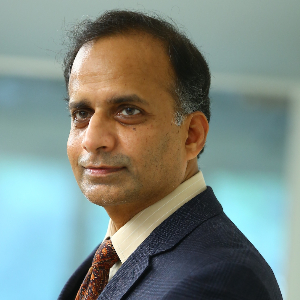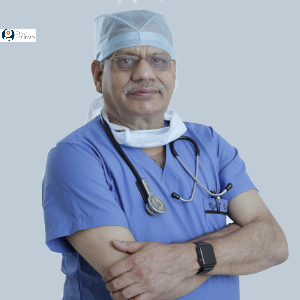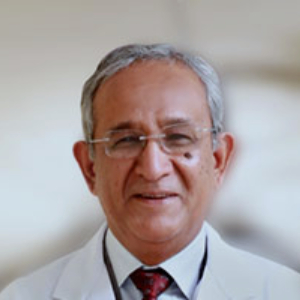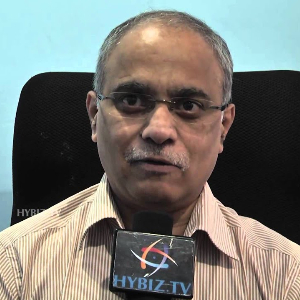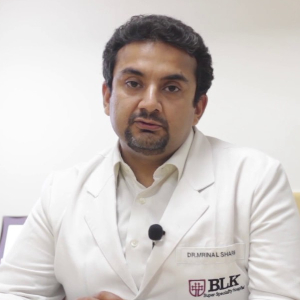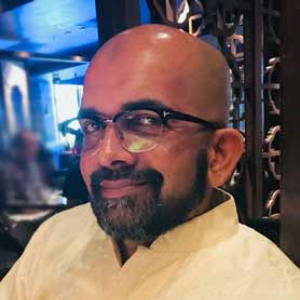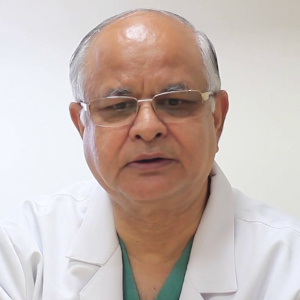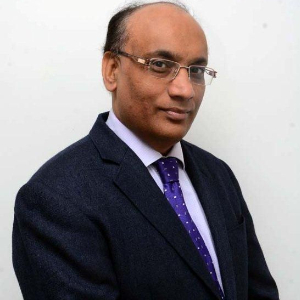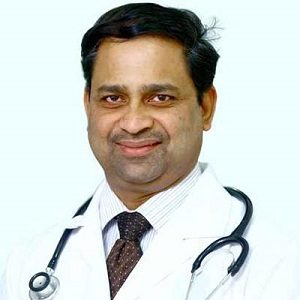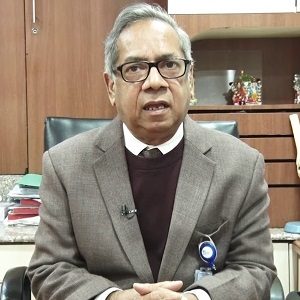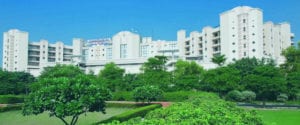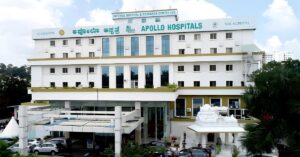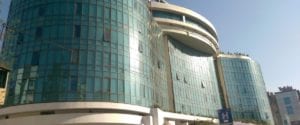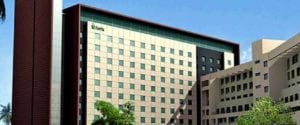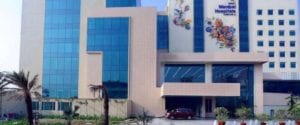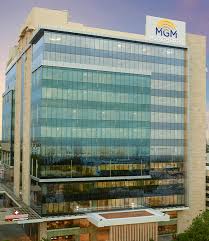Best Limb Lengthening Surgery Doctors in India
- Orthopedic surgeon, Chennai, India
- Over 35 years’ experience
- MGM Healthcare Chennai
Profile Highlights:
- Dr. A B Govindaraj is a leading Orthopedic surgeon who holds an extensive experience of more than 3 decades in the field and performs over 300 joint replacement surgeries annually.
- He excels in unilateral and bilateral total knee replacement, total hip replacement, and shoulder replacement surgeries.
- Orthopedic Surgeon, Hyderabad, India
- Over 30 years’ experience
- CARE Hospitals Hyderabad
Profile Highlights:
- Dr. B N Prasad is a well-known Orthopedic Surgeon with over 3 decades of experience.
- Dr. B N Prasad is among the few surgeons in the country to specialize in both adult and pediatric orthopedics and has taken up numerous cases and treated patients with excellent outcomes.
- He provides diagnostic as well as surgical treatment for various types of orthopedic disorders such as arthritis and osteoporosis.
- Orthopedic Surgeon, Gurugram, India
- Over 40 years’ experience
- Artemis Hospital, Gurgaon
Profile Highlights:
- Dr. B K Singh is one of the best Orthopedic Surgeons in India with experience encompassing over 4 decades.
- He holds the credit for over 5000 Arthroplasty procedures and is one of the few surgeons in India with expertise in Robotic Knee and Hip Replacement Surgeries.
- Dr. B K Singh received his training in Joint Replacement Surgery and Robotic Knee and Hip replacement procedures from India, UK, and Japan.
- Orthopedic Surgeon, Hyderabad, India
- Over 30 years’ experience
- Gleneagles Global Hospitals Hyderabad
Profile Highlights:
- Dr. J V S Vidya Sagar is a renowned Orthopedic Surgeon and one of the most experienced surgeons for Arthroscopy in India.
- Dr. Vidya Sagar has been performing Arthroscopic and Joint Replacement surgeries for over 30 years during which he has performed 31,500 Arthroscopies, 13,400 joint replacement surgeries, 27, 600 knee joint surgeries, and 20,800 surgeries for ligament reconstruction, and over 38,600 surgeries for cerebral palsy and polio.
- Top Orthopedic Surgeon | BLK Hospital, New Delhi, India
- 20+ Years Experience
- BLK Super Specialty Hospital, New Delhi
Profile Highlights:
- Dr. Mrinal Sharma is a highly renowned Orthopedic Surgeon and Joint Replacement Specialist with a specialization in Arthroplasty.
- Dr. Mrinal Sharma holds with him an experience of more than a decade and has achieved huge success with joint replacement procedures, especially of the knee, during his career.
- He is among the new generation of Orthopedic surgeons who use Computer Navigated techniques for performing knee and hip replacement surgeries.
- Orthopedic Surgeon, Mumbai, India
- Over 20 years’ experience
- Gleneagles Global Hospital Parel Mumbai
Profile Highlights:
- Dr. Murali Poduval is a well-known Orthopedic surgeon in Mumbai with a specialization in Joint Replacement surgeries.
- He holds an extensive experience of close to 2 decades in Orthopedics and Joint replacement surgery and is an expert in the management and treatment of deformity correction, arthroplasty, and complex trauma.
- He is highly skilled in performing all types of primary and revision surgeries on the hip, knee, and spine. His primary interest also includes hip arthroplasty for severe defects in children and adolescents.
- Top Orthopedic Surgeon & Spine Surgeon | BLK Hospital, New Delhi, India
- 40+ Years Experience
- BLK Super Specialty Hospital, New Delhi
Profile Highlights:
- Dr. Pradeep Sharma is the Director of the BLK-Max Centre for Orthopedics, Joint Reconstruction, and Spine Surgery in Delhi.
- Dr. Pradeep Sharma has an experience of 40+ years in the field and is an expert in the treatment of both adult and pediatric patients.
- Dr. Pradeep Sharma runs arthroplasty Fellowships supported by Zimmer and Stryker and has trained and mentored young surgeons in Arthroplasty.
- Orthopedic Surgeon, Kolkata, India
- Over 30 years’ experience
- CMRI (The Calcutta Medical Research Institute) Kolkata
Profile Highlights:
- Dr. Rakesh Rajput is the Director and HOD – Orthopedics at The Calcutta Medical Research Institute (CMRI), Kolkata.
- Dr. Rakesh Rajput’s expertise lies in Joint replacement surgeries for the knee and hip, Arthroscopy, and Pelvic and Ace tabular trauma. He is also highly skilled in Minimally invasive orthopedic surgeries.
- Dr. Rakesh Rajput received his training in Joint replacement procedure from the prestigious University of Dundee and has worked and trained under some of the best orthopedic surgeons in the world.
- Orthopaedic Surgeon, Chennai, India
- Over 22 years’ experience
- Apollo Hospitals Greams Road
Profile Highlights:
- Dr. Kornad P Kosygan is one of the few Orthopedic surgeons in India with a double FRCS degree.
- He has been successful in the diagnosis and treatment of severe Orthopedic problems throughout his career.
- Dr. Kornad is invited as an exclusive Orthopedics Specialist from over six countries in the Asian and European subcontinent.
- Dr. Kosygan has sought extensive training and exposure in the department of Orthopaedics.
- Top Orthopedic Surgeon | Apollo Hospitals, New Delhi, India
- 42+ Years Experience
- Indraprastha Apollo Hospital, New Delhi
Profile Highlights:
- As one of the most experienced orthopedic surgeons in Delhi, Dr. Chander Shekhar has been practicing for 42 years. He is associated with Indraprastha Apollo Hospital as a consultant.
- Dr. Chander Shekhar is interested in Knee and Hip joint replacement and revision.
- He honed his expertise by completing a fellowship in shoulder and knee arthroscopy in the United States. Besides replacement & revision surgery, he has expertise in Birmingham Hip Resurfacing, BHR with stem, and Minimally Invasive Surgery.
Best Limb Lengthening Surgery Hospitals in India
Hospital Highlights:
- Apollo Hospitals is a private healthcare group in India, with its headquarters based in Chennai. Established in 1983 by Dr. Prathap C. Reddy, the group offers a wide range of medical treatments and services across various specialties.
- It is renowned for emphasizing innovation and utilizing cutting-edge medical technologies into patient treatment.
- Known as India’s first corporate hospital, Apollo Hospitals is often credited for pioneering the private healthcare revolution in the country.
- With clinics and hospitals located all throughout India, Apollo Hospitals is a nationwide healthcare organization. Its presence can also be found in foreign countries.
- Preventive health examinations, medical and surgical treatment, and diagnostic centres are just a few of the services that the Apollo group provides.
- The group has several centres of expertise, including Cardiac Sciences, Neurosciences, Orthopedics, Emergency Care, Cancer Care, and Organ Transplantation.
- City: Chennai, India
Hospital Highlights:
- RIMC is a multi-specialty hospital in a sprawling area of 36 acres located in Chromepet, Chennai, Tamil Nadu, India.
- The facility has 450 beds including 130 critical care beds, 9 operating rooms, modern reference laboratories and radiology services, and is conveniently located near road, rail and air transportation.
- RIMC is led and managed by world-renowned physicians committed to healthcare.
- RIMC offers the broadest range of clinical care, education, and research. The hospital offers state-of-the-art technology and modern treatment facilities designed to provide health care at an affordable cost.
- Rela Institute is driven by patient needs, comfort and confidence.
- City: New Delhi, India
Hospital Highlights:
- Fortis Hospital in Shalimar Bagh is a multi-super specialty hospital that strives to provide world-class patient care by leaving no stone unturned.
- Fortis, Shalimar Bagh, with 262 beds and a 7.34-acre footprint, provides the best level of medical care through its team of doctors, nurses, technicians, and management professionals.
- City: Bengaluru, India
Hospital Highlights:
- Established in 2007, the Apollo Hospitals Bangalore is a 300-bed multispecialty hospital situated in Bannerghatta Road, Bangalore.
- Equipped with the state-of-the-art technology, it is a leading hospital dedicated to providing healthcare needs to patients with compassion and expertise.
- It is the first hospital to have completed the highest number of Robot Assisted Heart Surgeries in India.
- Over the years, it has successfully conducted some of the rarest medical procedures such as spinal angiolipoma excision, autologous chondrocyte implantations, and tibial tuberosity shift with MPSL reconstruction.
- The Apollo Hospitals Bangalore has the reputation of performing the greatest series of airway stents in the country.
- Additionally, the hospital is known for providing comprehensive treatment in specialties such as gastroenterology, urology, gynecology, oncology, colorectal surgery, etc.
- The “The Minimal Access Surgery Centre” (MASC), one of Apollo Hospitals, Bangalore’s premier Centres of Excellence, is devoted to the use of minimally invasive surgical procedures.
- In 2013, THE WEEK-A C Nielsen, Best Hospital Survey ranked Apollo Hospitals Bangalore as the 2nd best multi-speciality hospital in Bangalore.
- City: Mumbai, India
Hospital Highlights:
- Gleneagles Global Hospital The 450-bed facility comprises of 17-stories, housing state-of-the-art infrastructure, and advanced medical care facilities.
- The hospital offers end-to-end clinical, surgical, and diagnostic services. It is equipped with a team of eminent medical professionals aided by qualified nurses and medical staff
- The Hospital offers advanced Endoscopic procedures, Hepatobiliary and Liver Surgeries, Surgical and Medical Gastroenterology, Bariatric Surgery, and Robotic surgery.
- The hospital is a center of excellence for Orthopedics, Joint Replacement, Knee Replacement, and Hip Replacement surgery.
- City: Hyderabad, India
Hospital Highlights:
- CARE Hospitals were established in the year 2000, by CARE Group.
- The multispecialty hospital has 435 beds, including 120 critical care beds, with an annual inflow of 180000 outpatients and 16,000 in-patients.
- The hospital provides specialty medical services in Cardiology, Cardiothoracic Surgery, Pediatric Cardiology, Pediatric Cardiothoracic Surgery, Neurology, Neurosurgery, Nephrology, and Urology.
- The hospital has the first dual source, 128 slice CT scanner (for high precision cardiac imaging) – the first of its kind in south India.
- The hospital offers a wide range of accommodation facilities for the convenience of its varied patient base, ranging from general wards to super deluxe rooms.
- City: Mumbai, India
Hospital Highlights:
- Fortis Hospital in Mulund is a 315-bed multi-speciality tertiary care hospital with five JCI accreditations that offers a wide variety of diagnostic and treatment services. The Fortis Hospital in Mulund delivers patient-centred treatment with cutting-edge technology, highly skilled and experienced surgeons, and paramedical staff.
- This institution houses Maharashtra’s largest multi-organ transplant centre. It is also the first heart transplant centre in western India to conduct 100 or more consecutive heart transplants in under four years. It is the only hospital in the city to have multi-organ transplants and has handled the youngest patient for angioplasty. Fortis Hospital Mulund now boasts the first advanced surgical robot in central Mumbai.
- Cardiology and heart surgery, urology, nephrology, neurosciences, orthopaedics, digestive care, emergency and critical care, and maternity care are among the services provided by the hospital.
- City: New Delhi, India
Hospital Highlights:
- Manipal Hospitals, Dwarka, is a super-specialty hospital in Dwarka, New Delhi, which is a part of Manipal Hospitals Group.
- The hospital aims to provide the best treatment on par with international standards at a fraction of the cost.
- Equipped with 380 beds, the hospital is also one of the new age hospitals which are equipped fully with state-of-the-art infrastructure, cutting-edge technology as well as the latest and advanced clinical practices. The hospital also has 13 modular Operation theatres with 118 beds which are solely meant for critical care.
- The hospital comprises internationally acclaimed doctors and highly professional and experienced hospital and medical staff who are able to provide preventive, therapeutic, and diagnostic services all under one roof.
- City: Chennai, India
Hospital Highlights:
- Located in Chennai, India, MGM Healthcare is a top multispecialty hospital that provides all medical services under one roof.
- Since its founding in 2019, MGM Healthcare has quickly become a leading national referral centre, creating several innovative flagship initiatives.
- MGM Healthcare combines next-generation medical and digital technologies to provide better patient results.
- With 12 centres of excellence, more than 400 inpatient beds, 100 intensive care unit beds, and 24/7 emergency care, MGM Healthcare leaves no chance in redefining the patient experience in Chennai.
- MGM Healthcare boasts 250+ expert doctors across 30+ departments, including Cardiology, Pulmonology, Neurology, Obstetrics & Gynaecology, and more.
- They house 12 specialized Centres of Excellence, including Neurosciences, Orthopaedics, and Multi-Organ Transplantation.
- Their team of doctors, nurses, and paramedics works together to give every patient individualized treatment.
Hospital Highlights:
- Lilavati Hospital & Research Centre is India’s premier multi-speciality tertiary care hospital and has been recognised as a global medical excellence centre.
- Lilavati Hospital & Research Centre has built an unrivalled level of trust with its patients over the years, thanks to a solid foundation that comprises cutting-edge facilities, the best medical competence, research, education, and charity endeavours.
- The hospital is quite proud of the fact that it now serves patients from all kinds of backgrounds, not just from the United States but from all around the world.
- The hospital has a total of 323 beds, one of the largest Intensive Care Units (ICUs), 12 Operation Theatres with modern amenities, over 300 consultants, and almost 1,800 personnel.
Limb Lengthening Surgery
Limb Lengthening is a surgical procedure where the bone in the leg is separated and distracted or pulled apart so that new bone can form in the gap, resulting in an increase of the length. This procedure is mainly recommended for patients suffering from leg deformities or stunted growth.
The bone, if broken or fractured regenerates itself over time, and the same tactical method is used along with external and internal medical assistance to conduct the limb lengthening surgery.
Technique used in Leg Lengthening
The principle for leg lengthening surgery is based on distraction osteogenesis where distraction stands for pulling apart and osteogenesis stands for formation of new bone.
The device used for the lengthening process is usually called a fixator and primarily, there are two types, namely, the Internal and the External Fixator. The Internal Fixators are implanted in the bone, inside the body attached to the marrow cavity of the bone like a brace while the external fixators are attached to the bone outside the body with the help of wires and pins.
Indications for Limb Lengthening Surgery
Limb Lengthening surgery is usually recommended in case of certain leg deformities but other primary causes for it can be-
- Trauma to the skeletal structure of the limb that results in shortening or deformity of the leg
- Congenital Limb length disorder
- Chronic infection of the bone or joints in the limb
- Pediatric hip disorders
- Soft tissue scarring
- Cosmetic enhancements
Symptoms for leg discrepancy varies from patient to patient. While in some patient the difference in the leg length can be visibly noticed, others might walk with a limp. In other patients, limb length issues may start with lower back pains or right after a serious leg trauma or injury.
Diagnostic Tests needed
Limb length differences at birth or visible length differences can be diagnosed at sight. However, before recommending the surgery, your doctor might ask you to attend some physical examinations to determine the root cause of the problem. Apart from X-Rays and Sonograms, or use a physical diagnostic method known as the Gait Analysis to determine the exact reason for this deformity. For detailed imaging diagnosis, doctors may even prescribe a CT Scan of the limbs.
Limb Lengthening Surgery
The surgical procedure is usually based on factors like the cause or size of the discrepancy or the patient’s age, reaction to medical procedures before or if the surgery is actually required or not. Because there are complications involved in the limb lengthening surgery, the medical team first determines if the condition can be treated in a non-surgical method. If the leg discrepancy is minute or negligible, the doctors might put the patient on observation to diagnose whether the condition is growing or not. Non-surgical methods also include wearing specialized shoes that provide an external lift to help ease activities like walking.
However, if the discrepancies are too prominent, the surgical procedure is suggested to stop or halt the limn differences.
Preparation for surgery
There are no exclusive preparation methods for this surgical procedure. However, patients are requested to help their medical team with a detailed breakdown of their past medical history including past or ongoing medications which includes herbal supplements, vitamins, homeopathy medicines, OTC or NSAIDs. Patients are also requested to ask their healthcare provider for any additional dietary regulations that they should follow before the surgery.
Explanation Video
Procedure
The surgery is performed under regional or general anaesthesia to avoid pain or discomfort during the surgery.
The lengthening procedure begins with the osteotomy process where the surgeon makes a small incision to reveal the bone to be lengthened. The bone is then cut and stabilized with internal and/or external fixators.
The patient will be requested to stay back in the hospital for 2-3 days and the rehabilitation will start after the day of the surgery where the medical team will help the patient with activities like getting out of bed, moving the joints, walking through crutches, etc. The lengthening process, however, starts a few weeks after the surgery has been performed.
Post-Operation Recovery
The surgical procedure is quick but the main lengthening process is based on the recovery from the surgical procedure which is usually done over two elaborate phases.
Distraction Phase
The actual limb lengthening procedure is done in the Distraction Phase where the internal or external fixators gradually lengthens the bone, 1 millimetre each day. The patients are usually at their best phase at this time since the bone are still distracted. Over the course of recovery, the muscles around the distraction point strengthen and movement or flexibility starts becoming harder and harder. The gap between the two distracted bone starts regenerating with new bone tissues.
The patients are requested to strictly follow therapy every single day since this is crucial for the lengthening process. Physiotherapists and the patient’s caregivers are both requested to conduct weekly and weekend physical therapy. The lengthening process works on how effective the therapy is. More the therapy the better the lengthening.
Consolidation Phase
On reaching the desired length, the patients reach the consolidation phase where the fixators are no longer adjusted for lengthening. The fixators however still remain in the leg as the newly formed bone now hardens throughout the course. Most patients are requested to stay back in the hospital during the distraction phase but they can be discharged during the consolidation phase based on their recovery progress. The bone healing process, however, is closely monitored by the medical team through image diagnostic tests such as X-rays or CT Scans.
At Home Care & Precaution
Caregivers are asked to constantly help the patient throughout the recovery process. From helping them with their daily activities to helping them through therapy, both physiotherapists and at-home caregivers have to spend a substantial amount of time helping the patient undergo the lengthening, hardening of the newly formed bone, and the recovery process in total.
Patients are requested to consult the doctor regarding showers, daily activities, re-joining work or for special diets to increase the recovery rate.
FAQs
How long do I have to stay in the hospital after the limb lengthening process?
The hospital stay after the surgery can be for 2-3 days but most patients opt to stay back in the hospital when they are going through their distraction phase. Patients can go home once they enter the consolidation phase.
What is the recovery time for leg lengthening surgery?
The lengthening process varies from patient to patient based on their reaction to therapy, immune system, and more. Generally, the recovery time period can be between 12-14 weeks from the day of surgery.
Are there any risks associated with the leg lengthening surgery?
Even though rare, risks such as infection during the new bone formation process has been documented.
When can I remove the fixators from my leg?
Every patient’s recovery phase will differ from one another. Usually, the pins or the fixators are removed when the patient is nearing the end of his/her consolidation phase.
What is the success rate for leg lengthening procedure?
Limb lengthening surgeries have over 90% success rate with expert surgeon.

